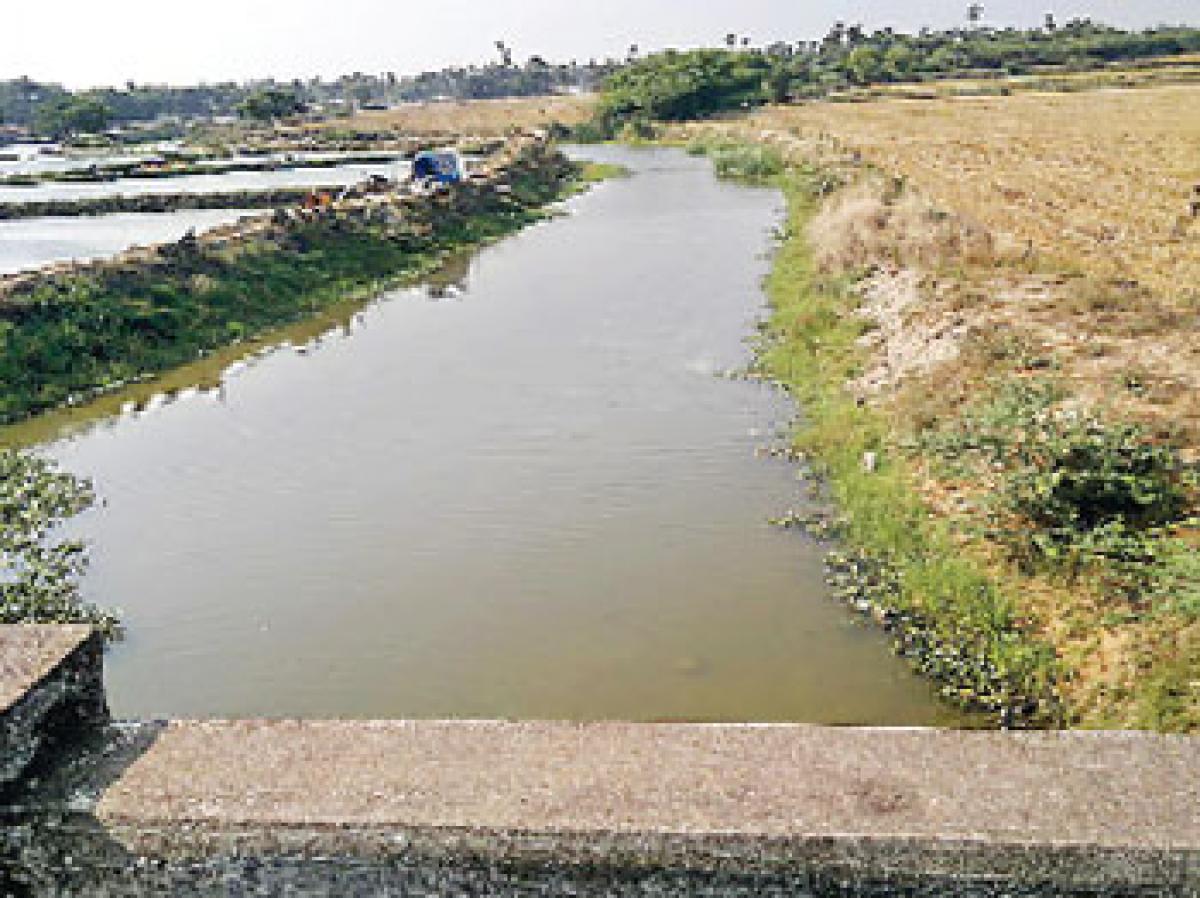Live
- New SCoR railway zone going to be a reality
- Trivikram hints at Samantha’s return to Telugu cinema at ‘Jigra’pre-release event
- Patnama Mahender Reddy Takes Charge as Government Chief Whip in Legislative Council
- CERT-In Issues Critical Warning for Microsoft Edge Users: Update Now
- Eight foreign tourists injured in road accident in Bihar
- A Comprehensive Guide to Women's Health- Blood Tests in Gynaecology
- Bipasha Basu reveals daughter Devi’s ‘favourite book’
- MP Putta Mahesh Kumar thanks PM Modi for funding Polavaram
- Bengaluru Police Launch Aggressive Anti-Drug Campaign, Netting Significant Arrests And Seizures
- Virtual Reality and Augmented Reality reshaping Dubai's real estate industry
Just In

The Buckingham Canal system, popularly known as National Waterway Number-4, which saved thousands of lives during disastrous tsunami in 2004, is under gross neglect of the government.
Nellore: The Buckingham Canal system, popularly known as National Waterway Number-4, which saved thousands of lives during disastrous tsunami in 2004, is under gross neglect of the government.
• The canal system saved thousands of lives during disastrous 2004 tsunami
• This National Waterway being used as dumping place for aqua firms
Now, the canal is namesake and is being used for supplying brackish water to aqua ponds and is useful for partial livelihood of some local communities.
The canal links Kakinada and Chennai which was built by then Governor of Madras Presidency, the Duke of Buckingham, to have a navigable waterway for transportation of commodities such as rice, salt and firewood.
Constructed in 1878, it was named after the Duke of Buckingham and had been in operation till 1964. The canal was dug parallel, about 1 to 2.5 km away from the coast of Bay of Bengal to get sea water through the preexisting creeks during high tide on full moon days, to maintain a constant water level in the canal.
A major earthquake occurred along a thrust fault in the subduction zone in Aceh Banda, Indonesia on 26 December 2004 after 9.3 earthquake at 6.28 am where the Indian tectonic plate is going below the overriding Burmese plate.
As a result, the ocean floor broke and there was a vertical displacement of about 15 to 20 meters along the fault causing large scale displacement of water and thus, generating gigantic tsunami waves thus led to more than 1600 aftershocks in Sumatra and across the Andaman Nicobar region.
According to NGRI scientists, who conducted studies on the event found that the canal system had saved thousands of lives after the quake. Typically, for an average ocean depth of 4 km, like in the Indian Ocean or Bay of Bengal region, the speed of the tsunami waves can go up to 720 km/h similar to the speed of a jet airliner.
The waves during tsunami also travelled around 750 km/h that caused one of the biggest natural disasters in modern history in which over 2, 00,000 people are known to have lost their lives.
The waves devastated the shores of parts of Indonesia, Sri Lanka, India, Thailand and other countries with waves reported up to 15 meters high, reaching as far as Somalia on the east coast of Africa, 4,500 km west of the epicentre.
Nellore also lost 20 lives during the catastrophe that hit the coast thrice within an hour and they were only close to the coast who were drying fish, preparing nets and other activity.
Though the waves travelled around 1-2 km in low-lying areas submerging villages but the Buckingham Canal saved thousands obstructing the flow of seawater. Villages after the canal system survived in such a way barricading the entry of waves.
The maximum run-up of the tsunami was 5 meters at Nagapattianam and the minimum was 2 meters at Bhogapuram in Vizianagaram district. The width of the canal is 30 meters and its depth is 10 meters and its dimensions have got significantly changed in recent decades due to debris from aquaculture industry at different locations of the canal in Andhra Pradesh.
The excess of floodwater from nearby rivers is released into the Buckingham Canal by opening the locks through the water channel on the western side of the canal near Siddavaram in Chillakur mandal.
Thousands of fishermen families are dwelling in between the Bucking ham Canal and the seashore. But, the tsunami waves drifted away towards the existing low-lying creeks at several places as the Buckingham Canal acted as a buffer zone and regulated the tsunami waves on the coastal region over nearly 310 km, the study by NGRI found. The damages at Pudikuppam, Srinivasapuram and Tupilipalem in Vakadu mandal were minimal.
“A recent study which was carried out in more than 30 villages from Iskapalli village of Allur Mandal to Krishnapatnam in Muthukur Mandal in around 52 km revealed that the canal is carrying only saline water and many of the major and minor aqua farms located along the canal are using it as a source for discharge and dumping debris,” said a senior official from the irrigation department.
Reports also said the rivers in spate wreaking havoc in Chennai city last November were due to blockage of water flow in the Buckingham canal and the same situation would happen again if the Canal system is adequately renovated in coastal areas of Andhra Pradesh, he warned.

© 2024 Hyderabad Media House Limited/The Hans India. All rights reserved. Powered by hocalwire.com







